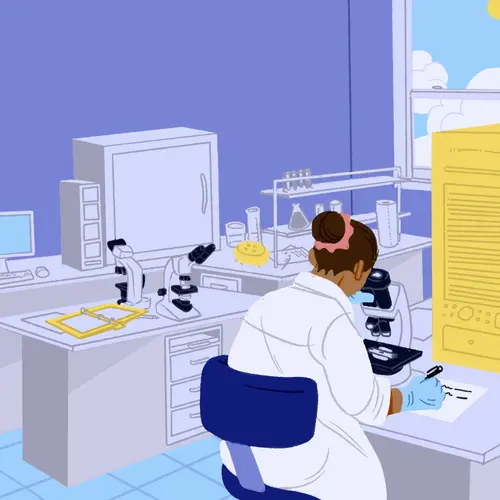A stem cell transplant is when doctors take some of your blood-forming cells to replace damaged or diseased bone marrow for yourself or someone else whose marrow doesn’t make enough of them. The stem cells can be taken from your blood or transplanted from your bone marrow. That’s why a stem cell transplant is also called a bone marrow transplant.
Why Are Stem Cell Transplants Needed?
Chemotherapy and radiation can damage bone marrow, where blood cells are made. If you’ll need treatment for a disease that will include one or both of these but your body makes healthy blood cells now, your doctor can collect them, freeze them, and store them for when you’ll need them after treatment. This is called an autologous stem cell transplant.
Some of the conditions that sometimes call for this procedure include:
- Chronic leukemia
- Hodgkin's lymphoma
- Multiple myeloma
- Non-Hodgkin's lymphoma
- Plasma cell disorders
Blood Stem Cell Procedure
The doctor will give you a medication, several days before, that causes your body to make more blood cells. They’ll use a catheter, or a small tube, to draw the blood. Then they’ll run it through a machine to take out the stem cells (apheresis) and put what’s left back into your body. This usually takes 1 to 2 hours. You’ll likely do this two to four times. The exact number depends on how many stem cells are needed.
Side Effects of Blood Cell Transplants
If you’re donating blood stem cells, the medicine they give you to help your body make more of these cells may cause:
While your blood is being drawn, you might feel lightheaded and have:
If you’ll be having chemotherapy and possibly also radiation therapy soon, this means you may have side effects from those treatments, besides the ones from your transplant. If you do, you may have:
- Tiredness
- Nausea and vomiting
- Skin changes (redness, dryness, peeling)
- Hair loss
- Mouth sores
- Loss of appetite
As with any surgery, your chance of side effects from your stem cell transplant depends on your health, your age, and the type of transplant. Among them are:
- Infection
- Organ damage
- New cancer
- Infertility
- Stem cell failure
All these symptoms should go away once the process is over.
Donating Stem Cells to Others
When you donate marrow or blood stem cells to another person, that’s called an allogeneic stem cell transplant.
With this type of transplant, doctors can take healthy cells from your blood just like with an autologous transplant. They can also take marrow directly from your pelvic bone with a needle. You may have drugs to numb the area, or you could be asleep the whole time. It usually takes 1 or 2 hours. You can go home once you wake up and your doctor says it’s OK.
If you’re donating bone marrow, being put to sleep for the surgery may cause complications. You might feel tired or weak for a few days after. You could also find it hard to walk or feel a little sore where they put the needle in.
Who Can Donate?
Doctors look for donors who are healthy and between the ages of 18 and 44. That’s because evidence shows that cells from younger people work best. They’ll give you blood tests and check for certain conditions. You can’t donate if you have HIV or diseases like lupus or MS. Patients also match best with people of the same race or ethnicity. Donations are most needed from people who are:
- Black or African American
- American Indian or Alaska Native
- Asian
- Native Hawaiian or other Pacific Islander
- Hispanic or Latino
Donation centers have different rules. Some let donors and recipients communicate anonymously. Others will let you talk directly after 1 or 2 years. Some don’t ever allow contact. But if the person who gets your stem cells has the transplant at a U.S. treatment center, you should be able to get short updates on them at certain times after the procedure.
Payment for Donations
If you donate to someone else, you may have to pay some of the costs of screening. The person who gets your blood cells or their health insurance will pay for the actual procedure.
Under federal law, you can’t be paid for donating bone marrow or blood stem cells. In some states, your employer must give you time off from work to make the donation. This time off may be paid or unpaid, depending on your state.
If you have to travel to make the donation, the National Marrow Donor Program (NMDP) will cover travel, meal, and hotel expenses for you and one person to come with you.

